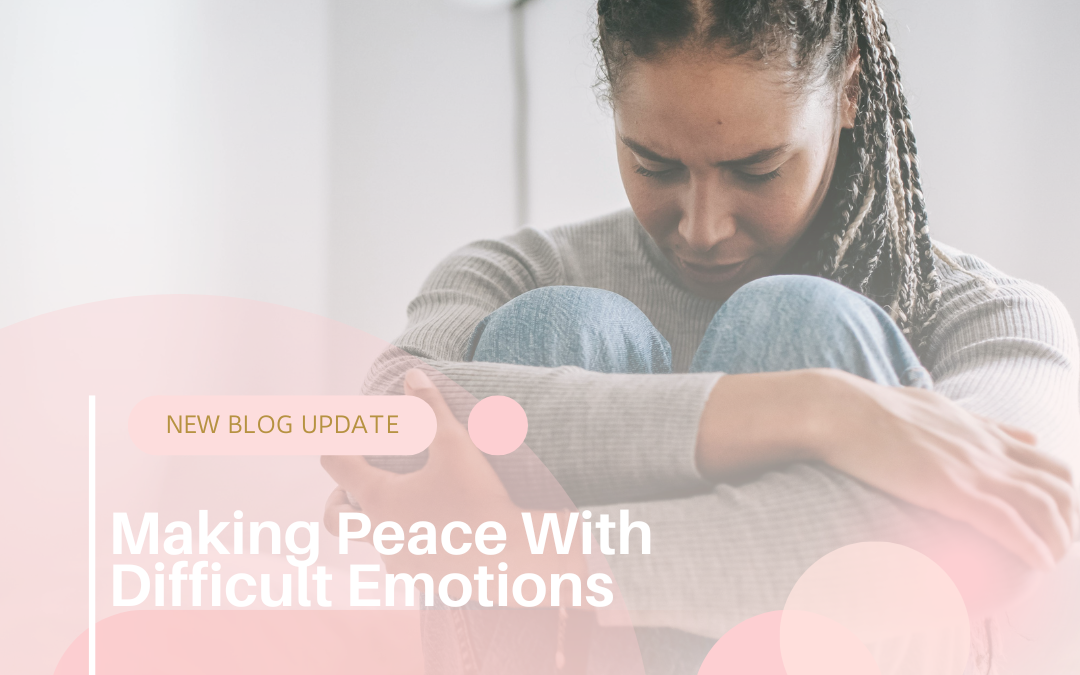We all face emotions that feel overwhelming—grief, anger, shame, fear, anxiety. These feelings can be so uncomfortable that our first instinct is to run from them, suppress them, or distract ourselves. But avoiding difficult emotions doesn’t make them disappear—it just delays the inevitable. Learning to sit with your emotions, rather than react to them or push them away, is a powerful skill that can transform your mental health.
Here’s how you can start doing just that.
🌀 Why Sitting With Emotions Matters
Emotions are data. They are messages from your inner world, not enemies. When we constantly avoid feeling them, we lose access to important self-understanding. Avoidance might offer temporary relief, but it often intensifies the emotion over time. Think of emotions like waves: when we fight them, they knock us over; when we learn to ride them, we stay afloat.
Sitting with emotions helps you:
-
Build emotional resilience
-
Improve decision-making
-
Reduce reactivity in relationships
-
Heal underlying wounds rather than manage symptoms
🧭 Step-by-Step: How to Sit With a Difficult Emotion
1. Notice What You’re Feeling (Without Judgment)
Start by pausing and naming the emotion: “I’m feeling overwhelmed.” “This is shame.” “I notice sadness.”
Labeling your emotions helps activate the rational part of your brain, creating space between you and the feeling. If you’re unsure, ask:
“Where do I feel this in my body?”
“What triggered this emotion?”
2. Breathe and Anchor Into Your Body
Focus on your breath. Try inhaling for 4 counts, holding for 4, exhaling for 6.
Scan your body: Are your shoulders tense? Is your jaw clenched? Ground yourself physically by:
-
Placing your hand on your chest
-
Feeling your feet on the floor
-
Holding onto an object like a stone or warm mug
This physical awareness reminds you that you are safe, even if the emotion feels big.
3. Let the Emotion Be There Without Trying to Change It
This is the hardest part: just be with the emotion. Don’t rush to fix it, explain it, or talk yourself out of it. Imagine you’re sitting beside a friend who is crying—you wouldn’t tell them to “get over it.” Offer yourself the same compassion.
Try saying:
“It’s okay to feel this way.”
“This feeling won’t last forever.”
“I don’t need to act on this. I’m just noticing.”
4. Observe, Don’t Identify
You are not your emotion. You are the observer of it. Rather than saying “I am angry,” try “I notice anger is present.”
This shift in language reminds you that emotions are temporary states, not definitions of who you are.
🔄 What Not to Do (Common Pitfalls)
-
Don’t numb with food, screens, or substances (though it’s normal to want to).
-
Don’t shame yourself for how you feel—emotions are not moral failings.
-
Don’t overanalyze the emotion in the moment. You can reflect later when the wave has passed.
🌱 What Happens After You Sit With It
Sometimes, the emotion simply fades after being acknowledged. Other times, it brings up insight—a memory, a belief, a need you’ve been neglecting. From that space of calm, you can respond rather than react.
You might:
-
Write a journal entry
-
Reach out to someone
-
Set a boundary
-
Offer yourself care or rest
Whatever follows, it comes from awareness, not impulsivity.
🧘♀️ Practices That Help You Get Better at This
Like any skill, emotional sitting takes practice. These tools can help:
-
Mindfulness meditation
-
Body scans or somatic therapy
-
Journaling prompts like “What emotion am I avoiding today?”
-
Therapy to explore patterns or trauma linked to emotional reactivity
💬 Final Thoughts
Sitting with difficult emotions doesn’t mean you let them run your life—it means you learn to listen, validate, and gently release them. You learn to trust yourself to handle the full spectrum of your humanity.
The more you practice, the more you’ll notice: you can handle hard things—and you don’t have to do it alone.


Recent Comments